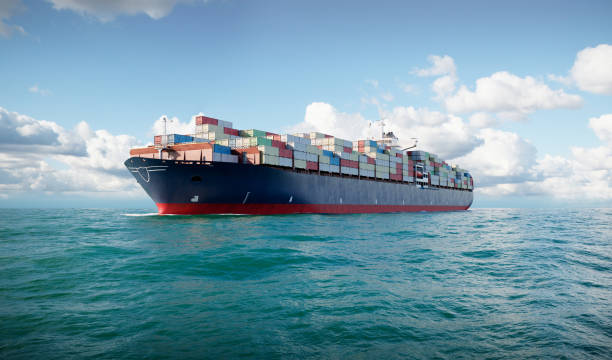How to Balance Cost & Speed: Air vs. Sea Freight Choices for Your Regular Shipments
Balancing cost and speed is a daily decision for importers and e-commerce sellers who manage regular shipments. Choosing the wrong mode—air when sea would suffice, or sea when air was necessary—can increase costs, cause stockouts, and damage customer relationships. This guide provides a practical, repeatable process to evaluate air versus sea freight for your regular shipping cycles. You’ll learn how to match delivery windows to transit times, when to use consolidation or hybrid routing, and which operational strategies reduce delays without exceeding your budget.
When Speed Must Beat Price
High-turnover SKUs, promotional periods, and seasonal peaks often require fast replenishment. Late shipments can lead to lost sales, marketplace penalties, and dissatisfied retail partners—costs that quickly surpass air freight premiums.
Use air freight (standard or express) for shipments that must arrive within 1–10 business days. Pre-clear customs electronically, reserve carrier space in advance during peak periods, and choose door-to-door services to minimize handling. If full air freight is too expensive, ship a priority portion by air and the rest by sea. Consider keeping a safety stock of best-selling items in regional warehouses to support frequent launches.
A UK electronics brand shipped 10% of their fast-selling products by standard air and the remainder via weekly consolidated sea freight. This kept products in stock during launch and reduced emergency air spending by 40%.
When Cost per Unit Rules the Plan
For low-value or bulky goods, air freight can erase profit margins. Relying on air for convenience may make recurring shipments unprofitable.
Choose sea freight for routine shipments—FCL for full container loads, LCL or consolidation for smaller volumes. Optimize container space with efficient pallet patterns, carton sizes, and mixed-SKU packing to lower per-unit costs. Negotiate contract rates for peak seasons, include drayage and port fees in cost calculations, and adjust reorder points to account for ocean lead times.
An Australian home-goods importer switched monthly restocks to consolidated 40-foot containers and optimized reorder timing. Per-unit freight costs decreased by approximately 60%, while service levels remained consistent.
When Variability and Reliability Drive Choices
Blank sailings, port congestion, and weather disruptions can affect ocean freight reliability. For recurring shipments, one delayed vessel can lead to stock shortages and rushed decisions.
Use lane-specific transit estimates based on real-world data (such as 95th-percentile timelines) when planning reorders. Select carriers with higher sailing frequency on critical routes. Implement real-time tracking and milestone alerts, and set predefined contingency rules—for example, automatically triggering air freight for priority SKUs if a shipment is delayed beyond a certain threshold.

A North American retailer switched to a higher-frequency carrier for a key lane and set up automatic air uplift rules. Schedule reliability improved, and emergency expedited spending decreased by 35%.
Practical SOP Checklist: Make Decisions Repeatable
Without a clear and enforced process, teams may make inconsistent choices that increase costs and risks over time.
Follow this three-step SOP for every order:
Deadline Mapping: Convert your required delivery date into a realistic door-to-door timeline, including transit and customs clearance for the specific lane.
Cost vs. Lateness Test: Calculate total landed costs for air and sea, and compare them to the potential cost of lateness (e.g., stockouts, fees, lost sales).
Risk Selection and Documentation: Choose air, sea, or hybrid based on the lowest total expected cost, and document the reasoning in purchase approvals. Automate alerts and prepare contingency plans for rapid response.
A Canadian apparel importer built this SOP into their purchase approval process. Emergency air requests now require a brief justification, leading to reduced emergency spending and fewer stockouts.
Trust and Expertise
We specialize in managing regular international shipments to North America, the UK, EU, and Australia. With established carrier partnerships, consolidation networks, and customs expertise, we provide lane-specific data and templates to help you choose the right mix of air, sea, or hybrid shipping—keeping costs under control and shelves stocked.
Call to Action
Email us at Hxin80377@gmail.com with your shipment’s origin, destination, product details, and target delivery window. We’ll provide a lane-specific recommendation (air, sea, or hybrid), door-to-door time and cost estimates, and a concise checklist to integrate into your shipping SOPs.
Related Posts
China to UK/Australia: Air vs. Sea Freight Transit Times — A Practical Guide for Importers
China to UK/Australia: Air vs. Sea Freight Transit Times —…
How to Balance Long-Term Supply Chains: Should You Mix Air & Sea Freight to Stabilize Transit Times?
How to Balance Long-Term Supply Chains: Should You Mix Air…
Air Freight vs Sea Shipping: Cost & Time Analysis from Shenzhen to Every US State
Air Freight vs Sea Shipping: Cost & Time Analysis from…
